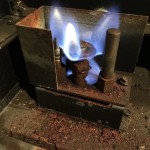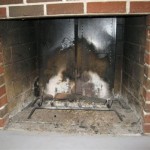Propane Fireplace Heaters For Homes
Propane fireplace heaters offer a blend of aesthetics, convenience, and heating efficiency, making them a popular choice for homeowners seeking supplemental or even primary heating solutions. These appliances provide the visual appeal of a traditional wood-burning fireplace without the associated mess, labor, and environmental concerns. This article explores the various aspects of propane fireplaces, including their benefits, types, installation considerations, safety features, and maintenance requirements.
A propane fireplace heater functions by burning propane gas to generate heat, which is then distributed into the room. Propane, a liquefied petroleum gas (LPG), is a relatively clean-burning fuel, producing fewer emissions than wood. The combustion process occurs within a firebox, often designed to mimic the appearance of a real wood-burning fireplace. Artificial logs, made of ceramic or refractory materials, are strategically placed to create a realistic flame display. The flames dance around the logs, providing a warm and inviting ambiance.
The heat generated by the propane fireplace can be distributed in several ways, depending on the model. Some units rely on radiant heat, warming objects and people directly in front of the fireplace. Others utilize convection, circulating heated air throughout the room using a fan. Some advanced models incorporate both radiant and convective heating for optimal performance.
Benefits of Propane Fireplace Heaters
Propane fireplaces offer numerous advantages over traditional wood-burning fireplaces and other heating solutions. One of the primary benefits is their convenience. Unlike wood-burning fireplaces, propane fireplaces require no hauling, chopping, or storing of wood. With the push of a button or the flip of a switch, the fireplace ignites, providing instant heat. The flame height and heat output can be easily adjusted using a thermostat or remote control, allowing for precise temperature control.
Another significant advantage is their cleanliness. Propane fireplaces produce no ashes, soot, or creosote, eliminating the need for messy cleanup and reducing the risk of chimney fires. The combustion process is relatively clean, resulting in fewer emissions compared to wood-burning fireplaces. This makes propane fireplaces a more environmentally friendly option, particularly in areas with air quality concerns.
Furthermore, propane fireplaces offer greater energy efficiency than traditional wood-burning fireplaces. A significant portion of the heat generated by a wood-burning fireplace escapes through the chimney, resulting in substantial energy loss. Propane fireplaces, on the other hand, are designed to maximize heat retention and distribution, leading to higher energy efficiency ratings. This can translate into lower heating costs over time.
Propane fireplaces also provide a reliable source of heat during power outages. Many models are equipped with battery backup systems that allow them to operate even when the electricity is out. This can be a crucial benefit during winter storms or other emergencies, providing a safe and comfortable heating solution when other options are unavailable.
The aesthetic appeal of propane fireplaces is another compelling reason for their popularity. They offer the visual warmth and ambiance of a traditional fireplace without the associated drawbacks. The realistic flame display, coupled with the cozy heat, creates a relaxing and inviting atmosphere. Propane fireplaces are available in a wide range of styles and sizes, allowing homeowners to choose a model that complements their décor and fits their space requirements.
Types of Propane Fireplace Heaters
Propane fireplaces come in various types, each with its own unique features and benefits. Understanding the different types can help homeowners choose the model that best suits their needs and preferences.
Vented Propane Fireplaces: Vented propane fireplaces require a chimney or vent to exhaust combustion gases to the outside. These models typically offer a more realistic flame appearance and higher heat output compared to vent-free models. They are considered safer because they prevent the buildup of carbon monoxide and other harmful gases inside the home. However, they require professional installation to ensure proper venting and compliance with building codes.
Vent-Free Propane Fireplaces: Vent-free propane fireplaces, also known as ventless fireplaces, do not require a chimney or vent. They burn propane with a high degree of efficiency, producing minimal emissions. These models are typically easier and less expensive to install than vented fireplaces. However, they require careful monitoring to ensure adequate ventilation and prevent the buildup of carbon monoxide. It is crucial to follow the manufacturer's instructions and install a carbon monoxide detector in the room where the fireplace is located.
Propane Fireplace Inserts: Propane fireplace inserts are designed to be installed inside an existing wood-burning fireplace. They provide a convenient and efficient way to convert a traditional fireplace into a propane-fueled heating appliance. Fireplace inserts are available in both vented and vent-free models, offering homeowners flexibility in choosing the best option for their home.
Propane Fireplace Stoves: Propane fireplace stoves resemble traditional wood-burning stoves but operate on propane gas. They offer a rustic and charming aesthetic, providing both warmth and visual appeal. Propane stoves are available in various styles and sizes, making them suitable for a wide range of homes. They typically feature a glass door that allows users to view the flames and enjoy the ambiance of a fire.
Direct-Vent Propane Fireplaces: Direct-vent propane fireplaces draw combustion air from outside the home and exhaust combustion gases directly to the outside through a sealed venting system. This type of fireplace is highly efficient and safe, as it eliminates the risk of backdrafting and carbon monoxide buildup. Direct-vent fireplaces are a popular choice for new construction and remodeling projects.
Installation and Safety Considerations
Proper installation and maintenance are crucial for ensuring the safe and efficient operation of a propane fireplace. It is highly recommended to hire a qualified and licensed technician to install the fireplace, particularly for vented models that require chimney or vent connections. The technician will ensure that the fireplace is installed correctly, in accordance with building codes and manufacturer's instructions.
Before installation, it is important to assess the structural integrity of the fireplace area and ensure that it can support the weight of the fireplace. The area should also be free of flammable materials, such as curtains, furniture, and paper. A minimum clearance should be maintained between the fireplace and any combustible surfaces, as specified by the manufacturer.
For vented fireplaces, the chimney or vent should be inspected and cleaned regularly to remove any obstructions or buildup of creosote. A properly functioning chimney is essential for ensuring the safe and efficient removal of combustion gases. It is also important to ensure that the chimney is properly sized to accommodate the fireplace's heat output.
For vent-free fireplaces, it is crucial to provide adequate ventilation in the room where the fireplace is located. This can be achieved by opening a window or door slightly to allow fresh air to circulate. It is also essential to install a carbon monoxide detector in the room and test it regularly to ensure that it is functioning properly.
Regular maintenance is essential for keeping a propane fireplace in good working condition. This includes cleaning the burner assembly, checking the pilot light, and inspecting the gas connections for leaks. The fireplace should be inspected annually by a qualified technician to ensure that all components are functioning properly and that there are no safety hazards.
It is important to follow the manufacturer's instructions for operating and maintaining the propane fireplace. Never attempt to modify or repair the fireplace yourself, as this could create a safety hazard. If you notice any unusual noises, smells, or malfunctions, turn off the fireplace immediately and contact a qualified technician.
When operating a propane fireplace, it is essential to keep children and pets away from the fireplace to prevent burns or other injuries. Never leave the fireplace unattended while it is in operation. Turn off the fireplace when you leave the room or go to sleep.
Propane fireplace heaters offer a convenient, efficient, and aesthetically pleasing way to add warmth and ambiance to a home. By understanding the different types of fireplaces, the benefits they offer, and the necessary safety precautions, homeowners can make an informed decision and enjoy the comfort and beauty of a propane fireplace for years to come.

Enviro E Series Gas Or Propane Insert Fireplace Fireplaces By Cameron

Propane Fireplaces Gas Stoves Id Mt Wy Fall River

Comparing Wood And Propane Heat Tiny Stove

Pleasant Hearth 27 500 Btu 42 In Convertible Ventless Propane Gas Fireplace Cherry Vff Ph26lp The Home Depot

Enviro S Series Freestanding Gas Or Propane Fireplace Fireplaces By Cameron

Propane Fireplaces Superior Energy Llc

Fireplaces Gas Kingsman Fireplace Heater Ipi Propane Zdv3318lpe

Freestanding Gas Stoves Friendly Fires

Fireplace S In Tenneessee Gas Logs More Admiral Propane

Large Fireplaces Friendly Fires
Related Posts








